Emily Cupit’s 5 Step Process For Planting Autumn Crocus In September

BULBS > CROCUS > AUTUMN-PLANTING

Elizabeth is a Permaculture Garden Designer, Sustainability Consultant and Professional Writer, working as an advocate for positive change. She graduated from the University of St. Andrews with an MA in English and Philosophy and obtained a Diploma in Applied Permaculture Design from the Permaculture Association.
Reviewed By COLIN SKELLY

Colin is a Horticulturist and Horticultural Consultant with experience in a range of practical and managerial roles across heritage, commercial and public horticulture. He holds the Royal Horticultural Society’s Master of Horticulture award and has a particular interest in horticultural ecology and naturalistic planting for habitat and climate resilience.
Contributions From EMILY CUPIT

Emily is a Gardening Writer, Photographer and Videographer from Derbyshire, UK. She is the Founder of Emily's Green Diary - a community of more than 75,000 people who share in her gardening journey.
IN THIS GUIDE
CROCUS GUIDES
Autumn Planting
Container Growing
Growing From Seed
Crocuses are beautiful flowers that can really brighten up the garden, usually early in the year – in late winter or early spring.
If you would like to plant crocus bulbs then you will need to know how and when to do so.
Crocus bulbs should be planted in August or September for autumn flowering.
Here is a simple outline of the process to follow:
- Choose and source your crocus bulbs.
- Choose a suitable location for planting.
- Prepare the growing area or containers.
- Make holes for crocus bulbs or partly fill a pot.
- Put the crocus bulbs in place and cover them over.
A more detailed explanation of the process above, and some more hints and tips about this simple garden job, can be found below.
| Difficulty | Easy |
| Equipment Required | Hole dibber or trowel, pots if needed |
| When To Plant Out | August-October |
When To Plant
Crocuses, like daffodils and hyacinths, are best planted early in autumn.

Ideally, it is best to plant them by the end of September, but you can still keep planting them the following month if you don’t get around to it.
Just try to plant them as soon as you can.
1) Choose Your Bulbs
Of course, if you have decided that you would like to grow crocuses but have not yet purchased any bulbs, then the first decision you will have to make is which type and which specific variety you would like to grow.
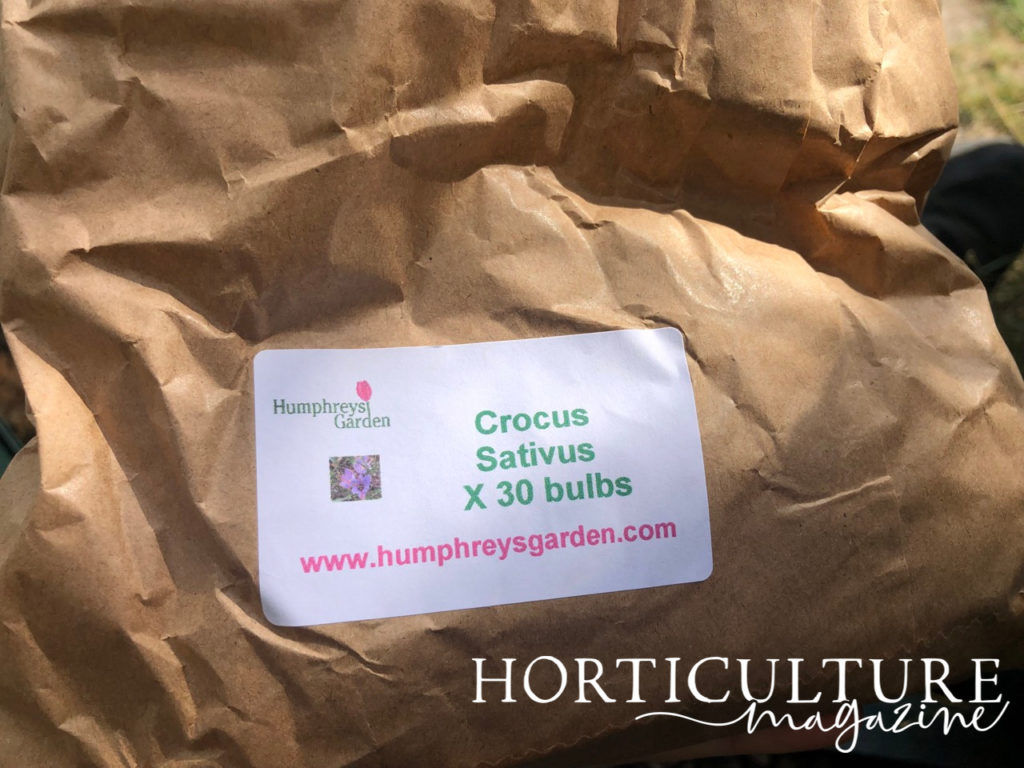
Broadly speaking, crocuses are typically divided into two main categories – spring-flowering and autumn-flowering types.
“Crocus ‘bulbs’ are botanically corms, but whether a true bulb, corm, tuber, tuberous root or rhizome, they are all a means for a plant to store energy underground before emerging,” shares Horticultural Consultant Colin Skelly.
However, there are also some specialist crocuses grown as alpine plants in very specific conditions.
2) Find A Suitable Location
When you are choosing crocus bulbs, you need to think not only about what the crocuses will look like and when they will bloom, but also about where you plan to plant them.
You might plant crocuses in a bed or border, a lawn or as part of a meadow planting scheme.
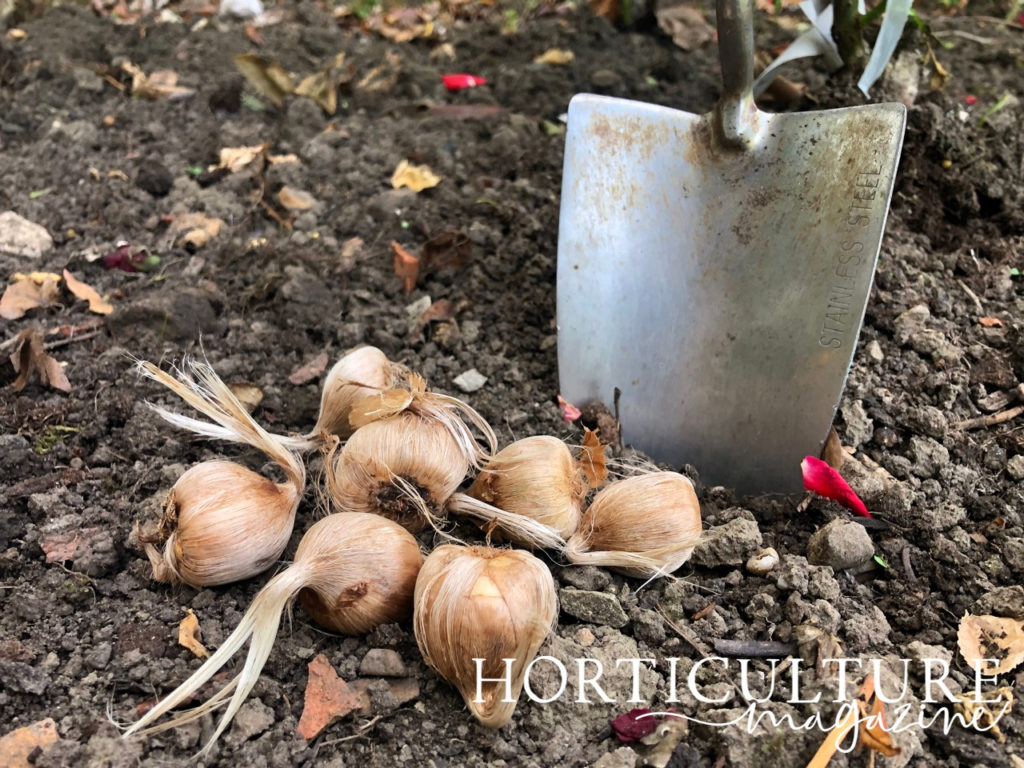
You can also grow them in a container, either on their own or alongside other spring bulbs in a layered planting sometimes referred to as a bulb lasagne.
Note that some crocuses will be better than others for growing in containers or naturalising in grass, so make sure you understand the needs and environmental preferences of the particular crocus variety that you have chosen to grow.
3) Prepare The Growing Area
Once you have decided where to grow crocuses, you may need to do some work to prepare before you can actually get planting.
If you are planting crocus bulbs in a bed or border, you should clear the area so it is free from weeds, and if you are planting in grass, make sure that it is cut short.
It is also important to make sure that the conditions are suitably free-draining as bulbs can rot if they end up in overly waterlogged conditions.
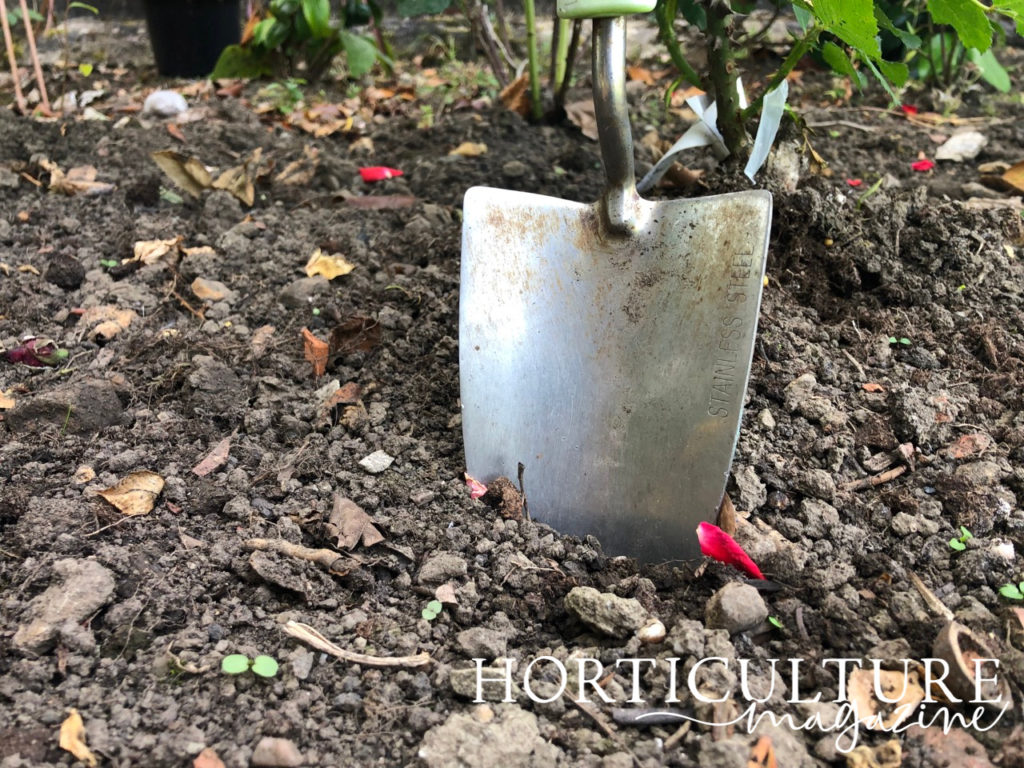
If you plan on growing crocuses in containers, you will need to select a container, and fill it with a suitable peat-free compost mix.
Some added grit can be beneficial in the mix to improve drainage.
When choosing a container and growing medium, you should also think carefully about what else you might like to add to the same pot.

One idea is to create a bulb lasagne, as mentioned above.
You might have 3 layers, with the latest-flowering, largest bulbs close to the bottom of the container, followed by mid-season spring bulbs in the next tier up, and then crocus bulbs closer to the top.
4) Make Holes For The Bulbs
The next step will of course depend on where you are planting your crocus bulbs.
If planting in a container, part fill the container with your chosen growing medium.
If you are planting other spring bulbs in layers with your crocuses, you will place these first, covering them over with a layer of growing medium before starting on planting the next tier.
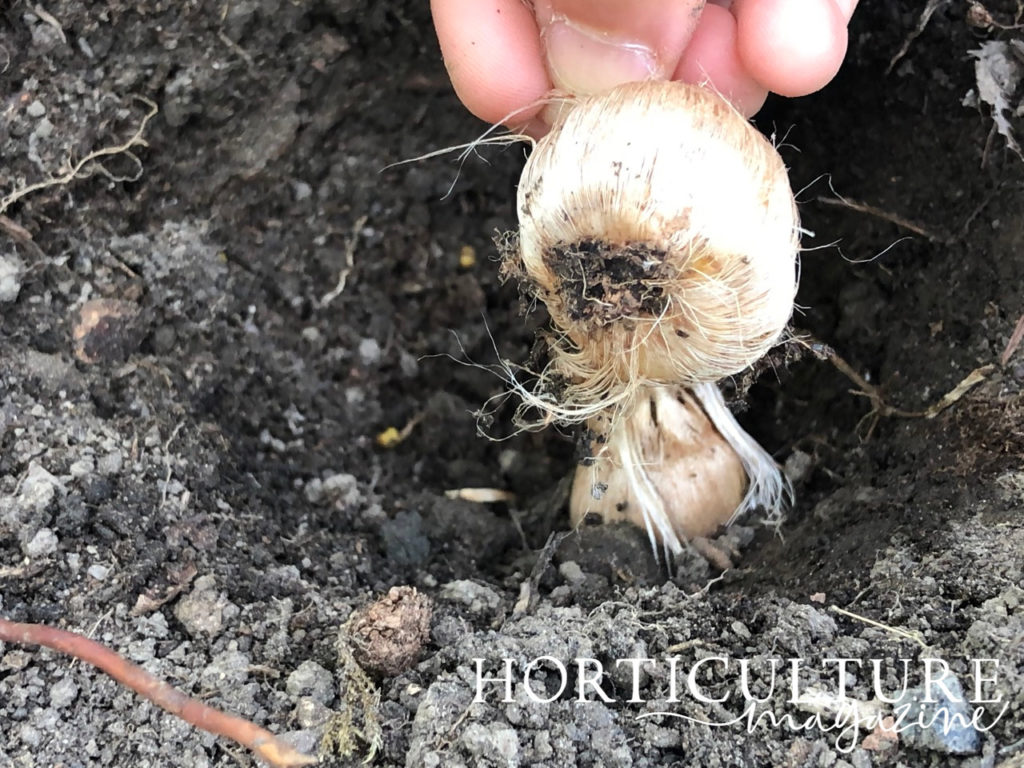
The key thing to remember when placing the bulbs is that for each layer, you should make sure that the bulbs are not placed directly above those in the layer below.
If you are planting bulbs in a bed or border or in an area of grass, you will make holes for your bulbs.
While you can simply use a small trowel, if you are planting a larger number this will be quite laborious and you may wish to use a bulb hole digger or a bulb planter.
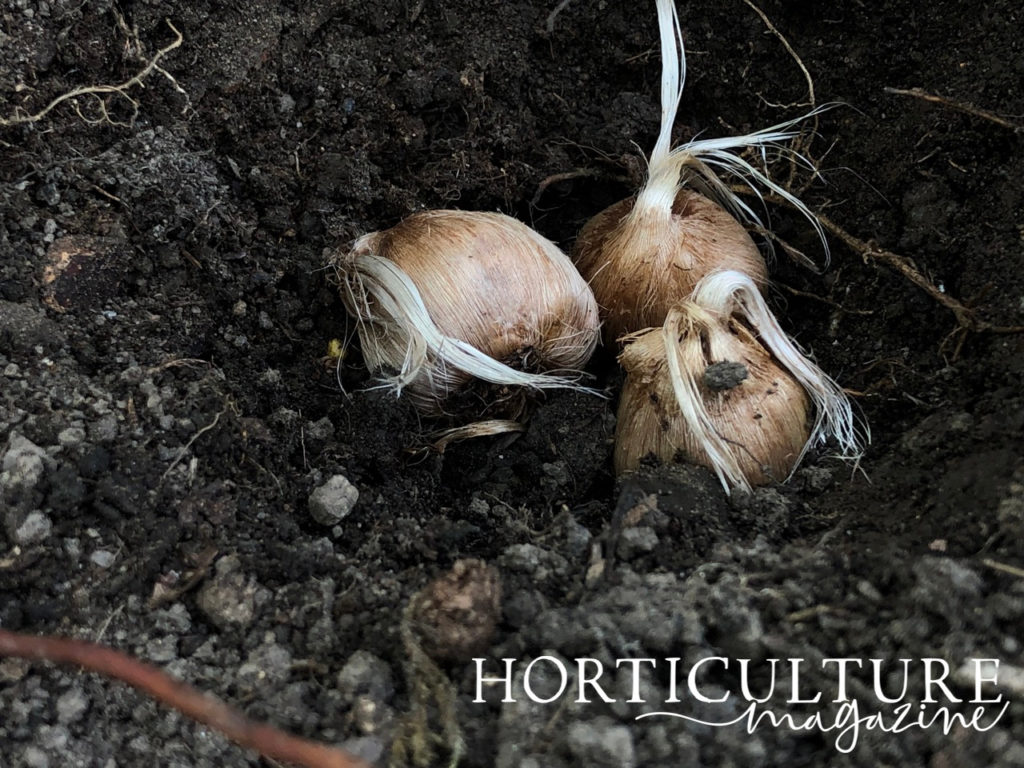
How deep the bulbs should be planted depends on the specific cultivar and the size of the bulbs.
Typically, crocus bulbs are planted around 7-12cm deep.
5) Cover Over
Now all that remains is to check over the bulbs to make sure they are healthy and place them into the positions prepared for them.
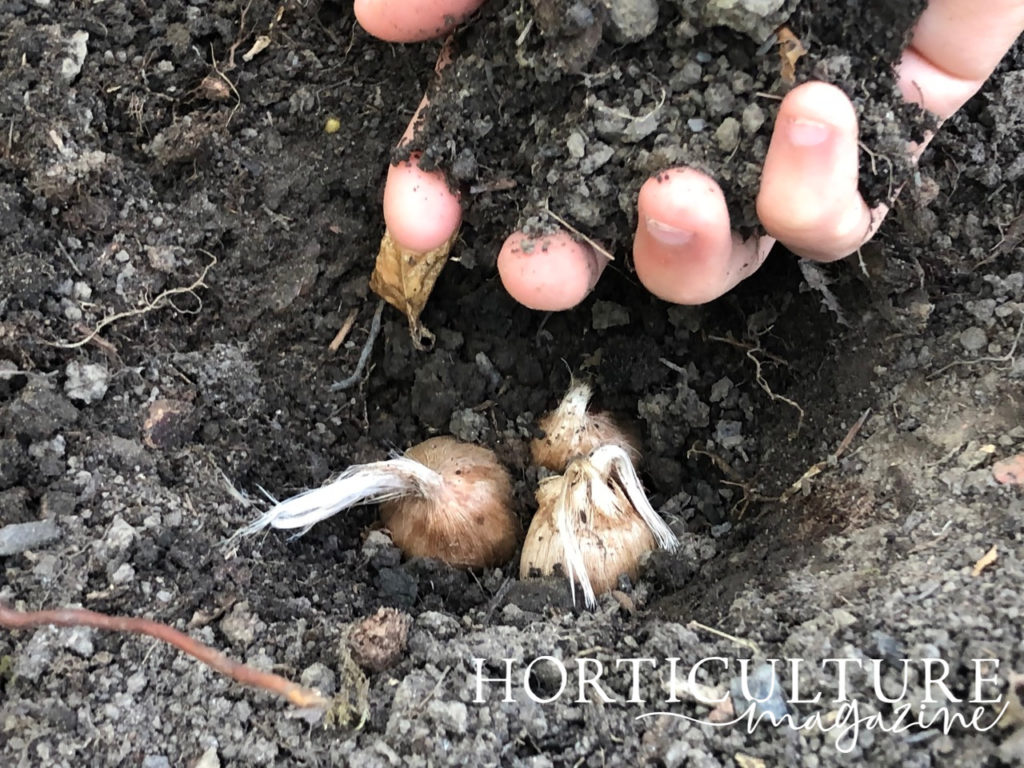
Finally, when the bulbs are in the position where you have chosen to grow them, fill back the soil or growing medium over them, gently firming them into place.
